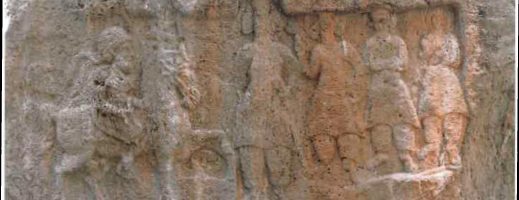
The Parthian empire: origins and strengthening
The Parthian empire: origins and strengthening
MARCOS UYÁ ESTEBAN (april 2022)
Abstract
Speaking of the origins of the Parthian Empire is speaking of one of the most unknown periods in the history of Persia. This darkness arises from the scarcity of literary sources that have come down to us, presenting themselves in a fragmentary way and derived from Greek and Latin historians, whose veracity is sometimes disputed due to the hostilities that both civilizations harboured against the emerging Parthian Empire. This article aims to give a more objective and rigorous summary of its true origins until it became a fearsome power that centuries later would dispute the supremacy of the Middle East against another colossus: Rome.
The sources
We have hardly any information from authentic Parthian sources, so we have to resort to classical sources, which, however, barely allude to issues such as social organization or the description of the peoples adjacent to the Parthian territory. In addition, we must bear in mind that the context of these sources is due to warfare times that the Greek Seleucids first, and the Romans, later, had with the Parthians, so that the tone of these is normally hostile and ungenerous, and even contemptible, as is the case of the 11th century AD Greek historian. C., Lucian of Samosata, who in his work A True Story vilifies them with a certain viciousness.
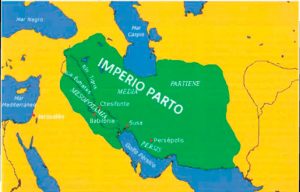
The Parthian empire at its maximum extension, towards the s. I BC
To obtain a more accurate information and at least more close to real facts, it is a must to rely to Greek historians living in the Greek cities of the Parthian state, who have better knowledge about this civilization and its society. Fragments of the lost work Parthica, by the Greek historian Apollodorus of Artemita, a Greek city in the east lands of Iraq, who lived in the 1st century B.C., are of great interest since they are often cited in Strabo’s Geography and even by the Roman historian Gnaeus Pompeius Trogus, whose lost fragments of the work Historiae Philippicae collected, in books XLI and XLII, a detailed account of the Parthian history, although Tarn states that the descriptions of Trogus come from a second Greek author, other than Apollodorus. Much of its content survives, albeit in a very abbreviated form, in the Epitome of the Roman historian Marcus Junianus Justinus added to the work of Trogus, more specifically to chapter XLIV, therefore, and despite the lack of detailed information, the work of Justin is indispensable to historians of the Parthian Empire. Other main sources, of Roman origin, are the occasional writings provided by historians such as Flavius Arrianus, Polybius, Tacitus and Lucius Cassius Dio but which already refer to a later time, especially the last two, to the origin of the Parthian Empire. It is worth mentioning the testimony of Arrianus, who proposes, without being proven, that the first Parthian king Arsaces I died prematurely, his brother Tiridates succeeding him.
These classical literary sources can be supplemented to some extent by epigraphic and documentary evidence. Some inscriptions in Greek located in Behistun and Susa, refer to certain aspects of the Parthian kingdom. Another genuine Parthian source of information that is likely to increase as archaeological research proceeds is provided by the finds of the inscriptions on the ostraca, the ostraca being a shell or also a pottery shard on which there were some writing scratched into them. The largest specimens found were excavated in Nisa, in what is now Turkmenistan, and the inscriptions mainly relate to different transactions related to the delivery of wine shipments. In addition, they contain information on land ownership, the qualities of the wine, official titles, and sometimes even the names and dates of reign of the rulers.
Such ostraca were probably common objects in the different areas of the kingdom. Of the Parthian official titles some are of considerable interest, for example that of nwhdr equivalent to “commander”, the term, psgryb, which would be translated as “successor”, known in the inscriptions of Hatra and in Urfa (Edessa), and perhaps even the Syrian bwdr, in Parthian bgdr, that is, “the guardian of the deity”.
There is another source of information, the oral poetry of the so-called Parthian ‘minstrels’, who were known in the Parthian language by the term Gosan. Some of their poems deal with historical or epic themes, and have been preserved through translations to modern Persian. The problem with that oral poetry is that it is very difficult to locate it chronologically, in the case of the romantic poem Vīs ō Rāmīn, translated from Middle Persian in the s. XI by As’ad of Gorgan, which, as Minorsky has shown, contains many details suggesting a date related to the Parthian world, but can hardly be referred to in any precise historical context.
Amongst modern sources Gutschmid’s work remains valid, although caution should be taken if studying it, as it contains information that can lend itself to reasoned criticism. Debevoise’s studies remain probably the most complete, although the reading of his work is sometimes difficult to understand. Other authors such as Rawlison or Neusner must also be taken into account.
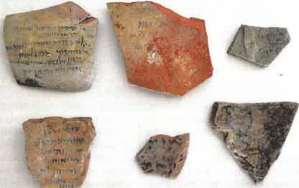
Ostraca from Nisa, from the 2010 excavation
The birth of the Parthian world
Already in the Achaemenid period, from the time of Darius I the Great, a province called Parthava is mentioned, probably a satrapy, under a local governor, whose capital was at Tüs, populated by people of Scythian origin. This region was apparently attached to Hycarnia, which today corresponds to present-day Gorgan in northern Iran, just to the south of the Caspian Sea, in the time of the Persian king, although, some sources mention that this union was made under the Seleucid period. Parthava subsequently broke away from Hycarnia and joined Khoresmia, situated in Central Asia. At this time, the Parthians supplied the Achaemenids with cavalry for their troops and their presence was required under the command of Governor Fratafernes to fight alongside Darius III against Alexander the Great when the Greek conqueror invaded Persian territory.
Scholars and historians have often debated whether the parthava of the Achaemenid era are the same people who later became those Parthians who rose up to defy Rome. What is clear is that after the fall of the Achaemenid Empire, Parthava, or Parthia, were ruled by the Seleucid dynasty. The region at this time appears to have partially settled in what is now present-day Khorasan in eastern Iran, and which shortly thereafter experienced the arrival of a subgroup from northern Iran, specifically from the southeastern Caspian Sea, known as the Parni, a dominant tribe of the Dahae Confederacy, who were led by Arsaces. They were northern ethnic relatives of the Saka of northern Iran and may have arrived as early as the reign of Seleucus I (305-281 BC).
Parthian independence
The year 247 B.C. is a key date in the process of the creation of the Parthian state. However, the different sources in this regard pose problems of interpretation of the successive events. There is no unanimity on this point. Gardner’s theory, possibly the most accurate, believes that during that year there was a revolt in the Parthian satrapy at the hands of the satrap Andragoras at a time of weakness of the Seleucid Empire, which at that time had disputes with Ptolemaic Egypt and witnessed in turn the change of king after the death of Antiochus II and the enthronement of his son Seleucus II. Tarn proposes that the revolt coincides with the coronation year of Tiridates l, who would be the second king of the Parthians, after Arsaces, a story collected by Arrianus and in which Bivar and Katouzían agree, but it does not seem plausible since modern historians maintain that the one who really reigned was Arsaces until 211 B.C. A third proposal argues that in reality the one who was named king was Arsaces himself taking the title, just as Alexander the Great did, of Shahanshah or King of Kings.
The historian Wolski has shed some light on the origin of the Parthian Empire and has proposed his own theory. Examining the ancient texts, he concluded that the version provided by Justin (XLI, 4), through Strabo (XI, 9, 2) and Pompey Trogus is a different and superior tradition to the one represented by the Arrianus fragments. (The campaigns of Alexander, IV, 1, 5) and Sincelus (Chronography or Corpus scriptorum historiae byzantinae, XIII). In Wolski’s view, therefore, the authentic version is that the satrapy of Bactria first established its autonomy from the Seleucid kingdom in 239 BC. C. under its governor Diodotus I establishing the so-called Greco-Bactrian kingdom. And later Arsaces established his own independent government in the satrapy of Parthia in the following year, in 238 BC. C., first ending the life of Andrágoras and just shortly after the failed campaign carried out by the Seleucid king Seleucus II trying to restore order; the same king being forced to return to Antioch due to a revolt in Asia Minor and by the constant problems with the Egypt of Ptolemy III, so allowing the satrapy to become independent, assuming therefore that the year 238 B.C. is the beginning of the new era of the Parthians or Arsacid era.
However, in this chaotic beginning, other theses must be highlighted. In the first place, returning to Gardner’s theory, the then satrap Andragoras, whose historicity is verified through numismatics from the Oxus treasure and Greek epigraphy and who was already a satrap in the time of Antiochus I Soter (281-261 BC), argues that Andragoras himself is unlikely to have become satrap as late as 238 BC. C., and suggests that he would had been assassinated by Arsaces some ten years before in a conspiracy to overthrow Andragoras, just before the revolt against Seleucid power. This event is not really proven, because there is a parallelism between the death of the satrap and the death of Darius III, the last Achaemenid king, when six conspirators killed him before Alexander the Great would capture him, a fact that seems to have actually occurred in its entirety with the death of Andragoras, when Arsaces along with his brother Tiridates and four more conspirators assassinated him. For his part, Bivar believes that the year 247 B.C. is the beginning, when the Seleucids lost control of Parthia to Andragoras advantage, and then Arsaces took control of Parthia, a view shared by Homa Katouzian and Gene Ralph Garthwaite. Instead, Vesta Sarkhosh Curtís affirms that the year 247 a. C. was when Arsaces became chieftain of the parni. Finally Curtis and María Brosius affirm that Andragoras was not overthrown by Arsaces until 238 a. B.C.
Desperate for the newfound independence, Seleucus II, despite having few forces, tried to regain control of Parthia, but the satrap Diodotus II of the Greco-Bactrian kingdom, Diodotus I’s successor, allied himself with Arsaces and was able to maintain independence by establishing the new Parthian capital at Hecatompylos and began to build new cities such as Sahr e-Qümes, near Damghan or Nisa, in Central Asia.
Another of the dark points within the beginning of the Parthian Empire refers to the historicity of the brothers Arsaces and Tiridates. Some authors suggest that Tiridates is the true founder. Others, like Wolski, keep that the figure of Tiridates was legendary, and that, in fact, Arsaces reigned for more than thirty years. On the other hand, Wolski himself rejects the historicity of an “Artabanus I” in this period, as a result of the testimony of Justin (XLI, 5, 6), since despite the fact that in the Greek sources Arsaces is alluded, whereas in the Latin ones it is Artabanus, they are not the same person, which leads to confusion so that actually he is the son and successor of Arsaces I, who was known by the same name, that is, Arsaces II. However, although plausible, this reasoning does not seem sufficient, given the scant evidence in the sources, to conclusively establish this hypothesis. However, there is evidence that can shed light on Wolski’s theory and it is that an ostraca, number 1760, that appeared in Nisa alludes to the existence of Arsaces II, who was the nephew of Arsaces I.
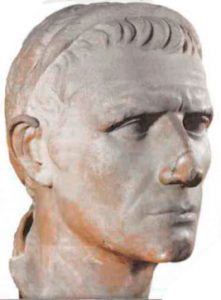
Bust of Antiochus III the Great, who for a time re-established Seleucid authority in Parthia
First steps
Taking it as right, and almost undisputed, the existence of Arsaces I, he reigned until 211 B.C. For a time, Arsaces I consolidates his position in Parthia and Hyrcania, taking advantage of Ptolemy III from Egypt invasion of Seleucid territory in the west. However, and shortly after, Arsaces was temporarily expelled from Parthia by the forces of Seleucus II, until he counterattacked and recovered the territory. Seleucus II’s successor, Antiochus III the Great, who ascended the throne in 223 BC., inherited a state in disorder. Hycarnia had been annexed to Parthia, Seleucid authority in Judea was being challenged, and Alexander and Molon, the Seleucid governors of the satrapies of Persis and Media, had also revolted.
Antiochus III, in the following years, put down the revolts of Media, Persis and later that one of Xerxes of Armenia, securing control of the Empire so as him to face the Parthians in 209 B.C., being already Arsaces II the Parthian king. The attack was successful at Hycarnia and in addition the Parthian capital, Hecatompylos, was captured, with which Arsaces II recognized the authority of Antiochus III and, in a way, and for a brief period of time, it seemed that the authority of the Seleucids in Parthia had been restored. The Seleucid king, the following year, launched a campaign against Euthydemus of the Greco-Bactrian kingdom, but was defeated at the Battle of the Arian River, what is now the modern Hari River, in Afghanistan. Success against the Parthians was short-lived as Antiochus III was subsequently crushed by the Romans at Thermopylae in 191 BC. and in Magnesia, located in the region in Anatolia in 189 B.C. With the peace of Apamea in 188 BC, the weak position in which Antiochus III was left, forced him to abandon all the Seleucid territories north of the Taurus and surrender his battle elephants and his navy. In addition, the Seleucids had to pay 15,000 talents to the Romans. These financial burdens forced Antiochus III to launch an attack on the temple at Elam in southwestern Iran. The offensive was a resounding failure, so much so that the king lost his life in the July campaign of the year 187 BC., of which Priapatius, the son and successor of Arsaces II, who acceded to the throne in 191 B.C. took advantage for counterattacking and recovering the Parthian capital and the part of the Parthian territory located south of the Elbruz mountain range.
Priapatius’s son, Phraates I, was truly the first promoter of Parthian power. Despite the fact that his short reign lasted only five years (176-171 BC), it was enough for Parthia to be taken seriously as a power and also meant the beginning of the Seleucid decline, which began to see how the Parthians began to shake off that domain. The first thing this king did was to reaffirm his supremacy in the southern part of the Elbruz mountain range, subjugating the Amardi tribe, who were under Seleucid protection, and Hycarnia, and putting down new rebellions in Media and Armenia. In addition, he commanded garrisons from the Mardi tribe of modern Mazandaran in northern Iran, who soon established themselves on the western edge of Hycarnia. Later he planned a Parthian advance in the satrapy of Media, a very fertile region whose capital was Rhages, present-day Rei, south of Tehran. But he encountered two obstacles: the Dast-e-Kavir desert and the Elburz mountain range itself, so the only existing pass was the one called Gidurni Sudurrah or also known by the famous name of Pyfae Caspiae. The campaign, although it had some initial success, ended fatally for the king himself, who died in an ambush near the city of Haron, after receiving an arrow shot in the stomach.
Mithridates I and the Parthian consolidation
The total conquest of Media for the Parthian kingdom was carried out by the brother of Phraates I, the mighty Mithridates I, who must be considered the true author of the expansion of the Parthians until they became a great Empire. Indeed, Mithridates I always had an expansionist policy in mind and was waiting for the right moment to put his plans into practice. Firstly, to the east, he had to face the mighty Eucratides I of the Greco-Bactrian kingdom, who previously had seized power by defeating the reigning dynasty, the Euthydemic one. This made Mithridates I, facing the growing power of that king, secure his own border, and not only that, but he managed to annex the Bactrian satrapies of Tapuria and Traxiana with the help of the overthrown kings through a military campaign collected by Justin (XLI, 6) and by Strabo (XI, 11, 2). Meanwhile, in Media, Eucratides’ ally Timarchus, whose alliance is known through parallelisms in currency types and legends, who had usurped the Seleucid throne, was soon overthrown by the new Seleucid pretender, Demetrius I Soter, which meant that for more than a decade, Mithridates I could not advance further east when the Seleucid authority was restored. Numismatic studies have shown that after the fall of Timarchus, coins were minted in the Ecbatana region not only by Demetrius I (161-150 BC), but also during the early years of Alexander Balas (150-145 BC). C.), which gives rise to the veracity of these events. The advance of Mitridates I continued successfully against Ectabana, taking advantage of the internal disputes, in a date established in the 148 or 147 B.C., corresponding to the year 164 of the Seleucid Era. This victory was followed by the Parthian conquest of Babylon in Mesopotamia, where Mithridates I resumed minting coins, which had not been minted since Arsaces II, specifically tetradrachms. Mithridates then retreated to Hyrcania, leaving his forces to subdue the kingdoms of Elymais and Characene and occupy Susa. The conquests reached such an extreme that the limit was extended to the Indus River. The Parthian king also established royal residences at Seleucia, Ecbatana, Ctesiphon, and in his newly founded city, Mithradatkert (present-day Nisa, Turkmenistan), where the tombs of the Parthian kings were built and maintained. Ecbatana would become the main summer residence and Ctesiphon would not be the official capital until the reign of Gotarzes l (90-80 BC).
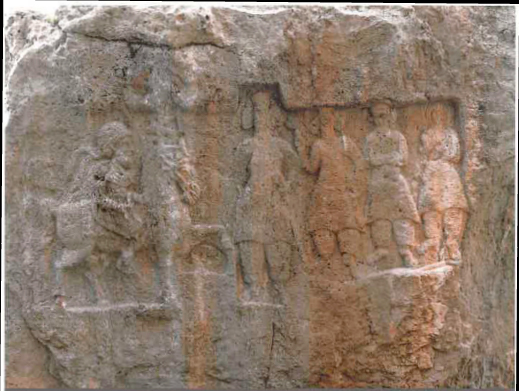
Stone relief carving of Mithridates I, who appears on the left of the image mounted on horseback. Hung-e-Nowruzi southwestern Iran
The Seleucids were unable to retaliate immediately, because they first had to solve their internal problems, such as Diodotus Tryphon’s rebellion in Antioch in 142 BC. C., who usurped the throne, throne that had been inherited first by Demetrius II Nicator thanks to the Egyptian intervention and later, in 145 B.C., by the son of Alejandro Balas, Antiochus VI Dionysus, thanks to the intervention of Diodotus himself. However, in 140 B.C., Demetrius II Nicator, who was in exile, was able to launch an attack against the Parthians in Mesopotamia. Despite some early successes, the Seleucids were defeated and Demetrius II himself was captured by Parthian forces and taken to Hyrcania. It is said that Mithridates I not only treated his captive with great hospitality, but even married his daughter Rodoguna, with whom he had children, until finally in 129 BC. C., he was released to fight against Antiochus VII Euergetes, who died before the conflict broke out, which led to Demetrius II regaining the throne.
In the year 138 B.C., the year of the death of Mithridates I, was when the Parthian Empire reached its maximum level. According to Orosius’ account (Historiarum adversum paganos, I, 2, 18):
He defeated Demetrius and invaded the city of Babylon and all of the limits of his province. In addition, he subjugated all the provinces between the Hydaspes and Indus rivers, although some historians believe that the Hydaspes is actually the current river Jhelum, located in the Punjab. The years to come would see the end of the Seleucid Empire and the rise of Roman expansionism.
Annex: numismatics at the beginning of the Parthian empire
When in 238 B.C., if we take the date as certain, the Parthians constitute themselves as an independent identity, the currency that is put into circulation, the drachm, was similar to that of the rest of the Seleucid empire as evidenced by the mint coins of Bactria and Hecatompylos. While in Ectabana, later, the drachm was only issued between the reigns of Antiochus I and Antiochus III, in the rest, the preference is in the use of the tetradrachm. The weight standard used derives from the Attic system, so in the 3rd century BC. C. the drachm weighs about 4 grams. On the obverse of this Seleucid coin was the king, bound with the diadem and facing right, while the reverse depicts Apollo seated facing left at the omphalos and holding a bow.
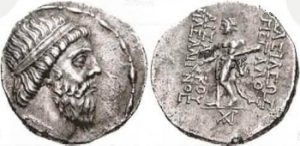
Tetradrachm corresponding to Mithridates I. Obverse: portrait of the king, reverse: Heracles holding a cup. The legend says: “King Arsaces friend of the Greeks” (British Museum)
Most of the first Parthian specimens already come from a treasure discovered in the Atrak Valley, located west of Bojnurd, northeastern Iran. It contained a tetradrachm and about 1,500 drachms, dated around 209 BC. C., many of these coins show on their obverse, somewhat more concave than the reverse, a head facing to the right, without a beard and with a certain diadem that may refer to the title of bashlyk or elected general, whose legend confirms it, and that it seems to be already used even in the Achaemenid period. The head is attributed to Arsaces I. On the reverse, an archer is depicted in clothing reminiscent of the nomads of the steppes, seated on a stool on the left and holding a bow, a type that will endure in all Parthian drachms until the end of the dynasty. The weight of these first coins ranges between 3.5 and 4.2 grams.
The later drachms of Arsaces I demonstrate an attempt to adapt the currency to the guidelines of the nascent state. To begin with, on the obverse the king’s bust is turned to the left and on the reverse the archer adopts a more erect posture and is seated towards the center. At the same time, part of the Greek legend is replaced by an Aramaic word that may be KRNY, which could be defined as ‘autocrat’. A kind of monogram is inserted under the stool and can be related to Mithradatkert, the citadel of Nisa, perhaps related to the names of some Mithridates of the Achaemenid family.
With Arsaces II, the coins have an obverse similar to the one used by his father, but on the reverse the inscription is reduced to a simple legend in Greek, while the monogram is changed to an A symbol or an eagle, which can lead to a speculation as to the possibility of the provenance of the mint. From the reign of Arsaces II, we have an example of a worn bronze coin, the original weight of which must have been about 5 grams, so that it was distributed as two rubbings, a quarter of an obolus (which was a sixth of a drachma).
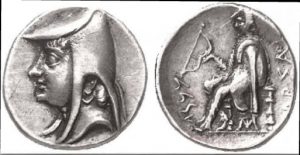
Coin of Arsaces I whose reverse shows a seated archer carrying a bow, with a Greek legend at the top and an Aramaic legend at the bottom.
With Antiochus III regaining some of the Seleucid authority in Parthia, coinage virtually ceased to be manufactured, until Mithridates I, who ascended the throne in 171 BC. C., and thanks to the political expansion of Parthia, it returns to issue currency. In the first place, the obverse follows the typology of the previous kings but this time a bust instead of just a beardless head, facing left with the diadem that refers to the bashlyk. On the reverse, the archer sits this time on the Apollonian omphalos, not on a stool. The most striking and commented by Greek writers is the continuation of the use of the name of the Arsacid dynasty instead of a more personal one, in this case of Mithridates, when this king was truly the promoter of the Empire. In fact, this custom was perpetuated until the arrival of the Sassanids and has been one of the greatest impediments to the realization of a more specific monetary series, although from Mithridates the beardless head and the bashlyk do not reappear, but only one more diadem simple. Issues will include tetradrachms and drachms along with obols in silver, as well as in bronze.
Bibliography
- Bivar, A.D.H., “The Political History of Iran Under the Arsacids”, in Yarshater, Ehsan, Cambridge History of lran 3.1, London & New York: Cambridge University Press, 1983, pp. 21-99.
- Brosius, M.: The Persians: An Introduction. London & New York: Routledge, 2006.
- Curtís, V. S.: “The lranian Revival in the Parthian Period”, in Curtís, Vesta Sarkhosh and Sarah Stewart, The Age of the Parthians: The Ideas of lran 2, London & New York: I.B. Tauris & Co Ltd., 2007, pp. 7-25.
- Debevoise, N. C.: A political history of Parthia. Chicago, 1938.
- Frye, R. N.: The History of Ancient Iran. Munich, C. H. Becksche Verlagsbuchhanndlung, 1984.
- Gardner, P.: The Parthian Coinage. London, 1877.
- Garthwaite, G. R.: The Persians. Oxford & Carlton: Blackwell Publishing, Ltd, 2005.
- Katouzian, H.: The Persians: Ancient, Medieval, and Modern lran. New Haven & London: Yale University Press, 2009.
- Minorsky, V.: “Vis u Ramin”, in Iranica: ‘Twenty Articles. London- Tehran, 1964, pp. 178-188.
- Newell. E. T.: The Coinage of the eastern Seleucid mints. New York, 19 ] 8.
- Simonetta, A. M.: “La monetazione partica dal 247 al 122 a. c.”. RIN LXX (1968), pp. 11-64.
- Tarn, W.W.: The Greeks in Bactria and India. Cambridge, 19 8.
- Van Gutschmid, A.: Geschichte Irans uns seiner Nachbarliinder. Tünbingen, 1888 .
- Wolski, J.: “The decay of the lranian empire of the Seleucids and the chronology of the Partian beginnings”. Berytus XII (1956-57), pp. 35-52.

